Meniscus Allograft Transplantation
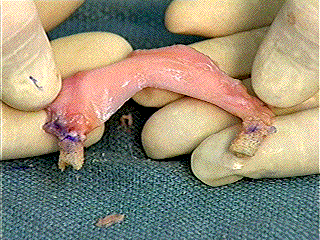
Meniscal allograft transplantation is a type of surgery in which a new meniscus, a cartilage ring in the knee, is placed into your knee. The new meniscus is taken from a person who has died (cadaver).
It is most commonly needed after a patient has had part of their meniscus removed (meniscectomy) during surgery. If you have had a knee arthroscopy and still have pain in your knee, meniscal transplantion may be an effective treatment option for you.
In Atlanta, Dr. Hyman performs meniscus transplant surgery as an outpatient procedure. The surgery lasts an hour or so depending upon other problems that may need to be addressed. For out of town or international patients, email us your information first, to see if you might be a candidate.
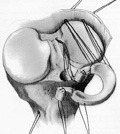
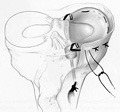
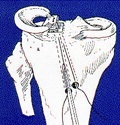
Frequently Asked Questions (FAQs) about Meniscal Transplantation
Does My Insurance Cover Meniscal Allograft Transplantation?
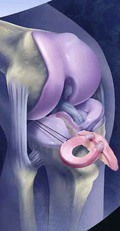
Often, the answer is "YES." Since 2005, when the American Medical Association assigned a specific CPT (Current Procedural Terminology) billing code for this procedure: 29868 Meniscal Transplantation, Medial or Lateral - the procedure began to be covered by payors. The procedure has been around since the early 1990s.
Even patients who are eligible for out-of-network benefits can anticipate reimbursement for this procedure. Patients can refer to their insurance policy manual or phone the customer service number on the back of their insurance card for reimbursement details.
Please phone or e-mail the Financial Coordinator for questions about coverage or assistance. Call 770-363-8770 or email [javascript protected email address].
About Meniscal Allograft Transplantation Surgery
There are two cartilage rings in the center of each knee, one on the inside (medial meniscus) and one on the outside (lateral meniscus). When a meniscus is torn, it is commonly removed by knee arthroscopy. However, some people still have pain after the meniscus is removed, or several years after the meniscus is removed.
A meniscus transplant places a new meniscus in your knee where the meniscus is missing. This procedure is only done in cases when the meniscus tear is so severe that all or nearly all of the meniscus cartilage has to be removed. The new meniscus can help knee pain and possibly prevent future arthritis. The new meniscus is tissue taken from a cadaver (allograft).
If your doctor finds that you are a good candidate for a meniscus transplant, X-rays of your knee are usually taken to find a meniscus that will fit your knee. The allograft is tested in the lab for possible diseases.
Other surgeries, such as ligament or cartilage repairs, may be performed at the time of the meniscus transplantation or with a separate surgery.

The meniscus transplant is usually performed by knee arthroscopy. You will likely be asleep during the surgery. When arthroscopy is performed, a camera is inserted into your knee through a small poke hole, and is connected to a video monitor. First, the surgeon will check the cartilage and ligaments of your knee. Then the surgeon will confirm that a meniscus transplant is appropriate, and that you don't have severe arthritis of the knee.
The new meniscus will be prepared to fit your knee correctly. If any tissue remains from your old meniscus, it will be removed using a shaver or other instruments. A small incision is made in the front of your knee to insert the new meniscus into the knee. Sutures are used to sew the new meniscus in place. Another incision may be needed to sew the meniscus in place. Screws or other devices may be used to hold the meniscus in place.
Meniscus allograft transplantation can be a challenging or difficult surgery. Very few surgeons are trained to perform the procedure. However, in people who are missing the meniscus and have pain, it can be very successful. Most people have less knee pain after meniscal allograft transplantation.
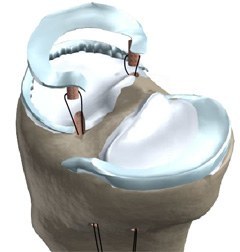
Recovery
After the surgery, you will probably wear a knee brace for the first 6 weeks. You also may need crutches for 1 to 6 weeks. Most people can move the knee immediately after surgery to help prevent any stiffness. Pain is usually managed with medications.
Physical therapy may help you regain the motion and strength of your knee. Therapy lasts for between 2 and 6 months.
How soon you can return to work will depend on your job, but it can take anywhere from a few weeks to a few months. Most people have to wait between 6 months and 1 year to fully return to activities and sports.
Will I need to take drugs after surgery to avoid rejection?
No, you will not need to take medications to avoid rejection of the tissue. Meniscal allograft tissue is not 'alive' when it's put in, but your body will take it up and make it a part of 'you' in time. It is very different than Organ transplantation, wherein a live organ (eg, heart, kidney, liver, etc) is put in you.
Extremely Uncommon, but possible risks include:
- Bleeding
- Blood Clot
- Infection
- Nerve damage
- Stiffness of the knee
- Failure of the surgery to relieve symptoms
- Failure of the meniscus to heal
- Tear of the new meniscus
- Disease transmission from the cadaver's meniscus
- Pain in the knee
- Weakness of the knee















